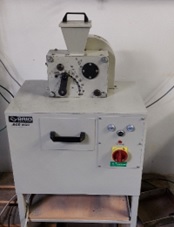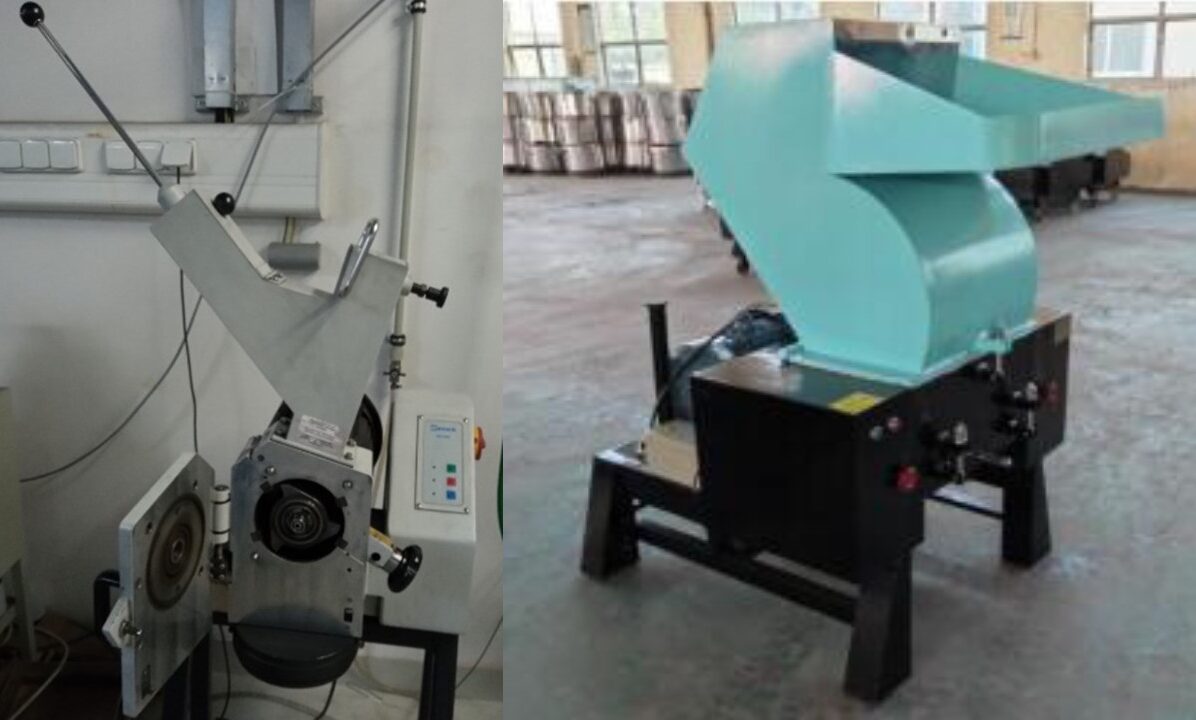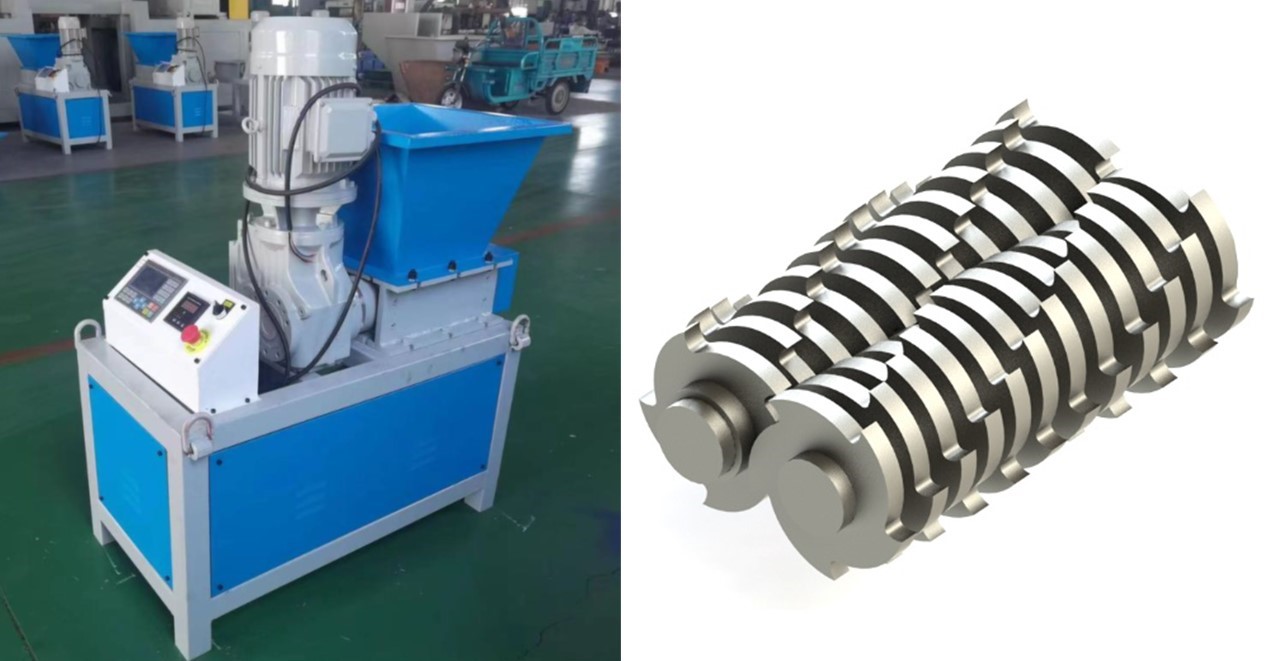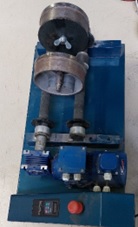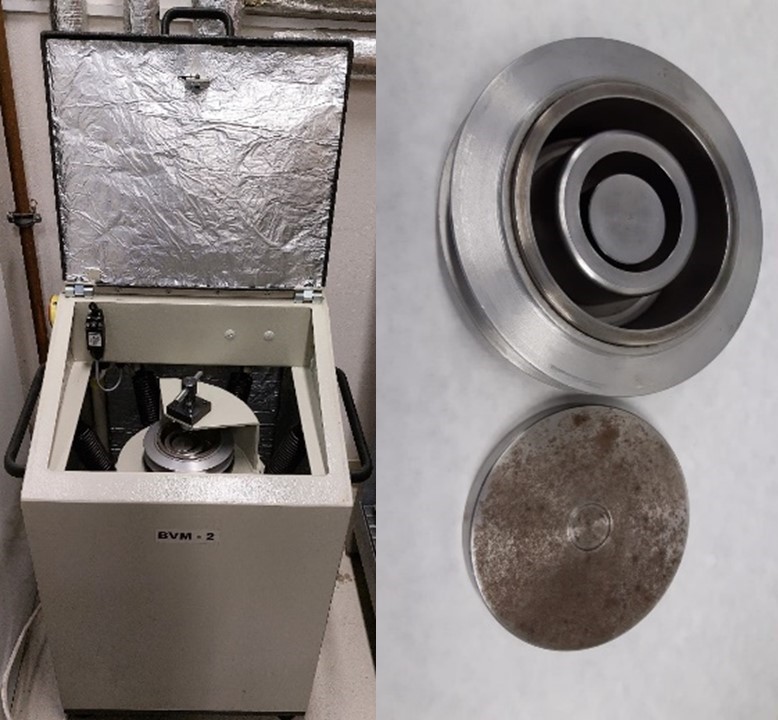Comminution devices
Comminution devices reduce the particle size of solid materials by different forces such as pressure, or attrition. Depending on the inlet and outlet particle size of the material commuted, these devices are divided into shredders, crushers, and millers from larger to smaller outlet particle sizes. In addition, crusher and shredder are all classified as primary millers, while mills are subdivided into secondary tertiary and quaternary millers regarding how fine are the outlet particles. The main objectives of this technology are to reduce the particle size of the particles according to the next steps necessities and also to liberate the different grains that make up the solid particles.
Primary Crusher and Shredders
This equipment is designed for the primary crushing of rocky and mineral materials. It consists of a mobile jaw that produces crushing of the material using an elliptical movement, as it is crushed against a fixed second jaw. The laboratory’s existing equipment is equipped with a crank handle that adjusts the passage span of the material. The maximum particle size that the equipment can handle is several centimeters, while the minimum size at the equipment outlet is half a centimeter. The equipment’s treatment capacity depends on the input and output size of the material, as well as its hardness. On average, the equipment is capable of processing approximately 25 to 30 kg per hour.
Specifically designed for primary shredding of ductile and fibrous materials such as plastics, composites, metals, and organic components. The equipment comprises a high-speed rotating rotor with a series of blades installed. Inside the shredding chamber, there are also fixed blades. The material is “cut” during the crushing process through the interaction of the moving and fixed blades. The research group’s facilities house two such devices. Firstly, a laboratory-scale device capable of processing several kilograms per hour. It offers the flexibility of producing output particle sizes ranging from a few centimeters to 0.5 millimeters. Secondly, a semi-industrial scale device with a significantly larger treatment capacity of several hundred kilograms. It generates output particle sizes in the range of a few centimeters.
The device is specifically designed for the recycling industry, targeting metallic materials, plastics, and composites. It consists of two sets of blades rotating in opposite directions at low speeds. The material to be sorted is introduced into the sorting chamber and undergoes shredding as it passes between the two blades. The resulting particle size of the shredded material depends on the specific blades used and generally exceeds one centimeter. Within the facility, there is shredding equipment available, optimized for size reduction of materials such as plastics, electrical and electronic devices, and small soft metals. The treatment capacity varies depending on the material being processed and ranges from 50 to 100 kilograms per hour. The output particle size is typically between 1 and 3 centimeters.
Secondary Mill Devices
The laboratory-scale device is specifically designed for secondary crushing of rocks and minerals. Its structure comprises a cylindrical outer chamber that houses a series of high-density metal cylinders. Through the rotation of the outer chamber, the material introduced into it is crushed by compression and wear forces. The equipment available in the research group’s facilities can handle materials with a particle size of up to approximately 10 centimeters. Depending on the material being processed and the duration of the grinding, the particle size can be reduced to the range of tens of microns. The production capacity of this equipment, which also depends on the material type and desired particle size, can reach up to 10 kilograms per grinding chamber.
Tertiary/Quaternary Mill Devices
The equipment is specifically designed for the micronization of small solid samples of minerals and/or rocks. Its primary objective is to enhance the detection and quantification capabilities of optical and chemical analysis equipment by increasing the specific surface area of the particles and facilitating the liberation of individual grains within the particles. The equipment comprises a main cylindrical chamber that houses both a hollow cylinder and a solid cylinder. These cylinders, arranged from larger to smaller diameters, enclose the sample to be processed. Through a vibratory movement, the cylindrical bodies rotate in a planetary manner at speeds of several thousand revolutions per minute. The material undergoes grinding through a combination of crushing and attrition forces, resulting in particle sizes as small as a few microns. The equipment available in the research group’s facilities can process samples ranging from 15 to 20 grams in each test.
